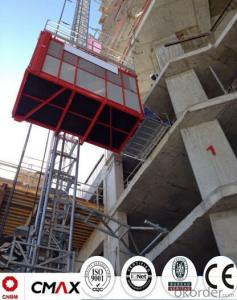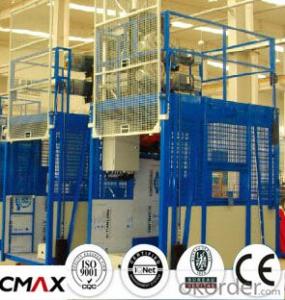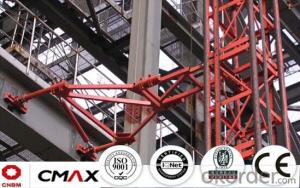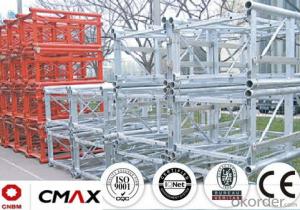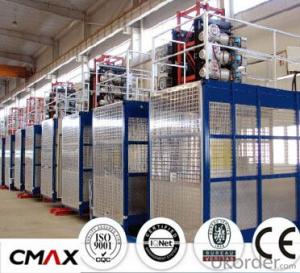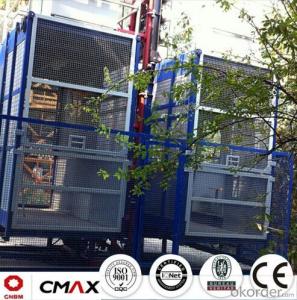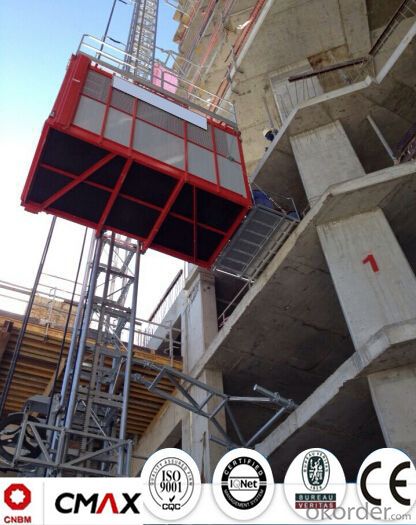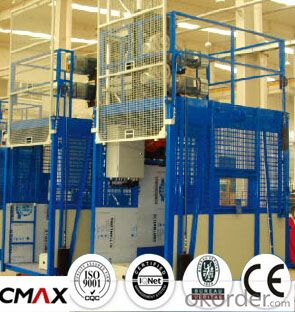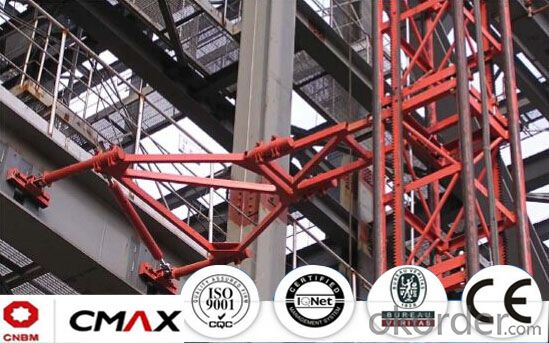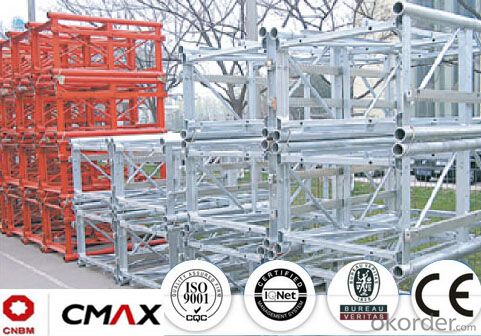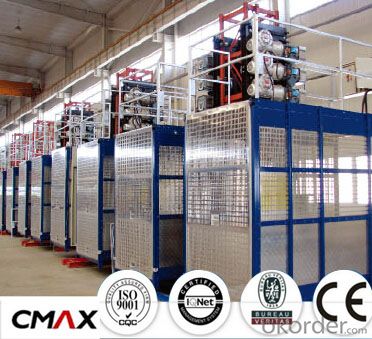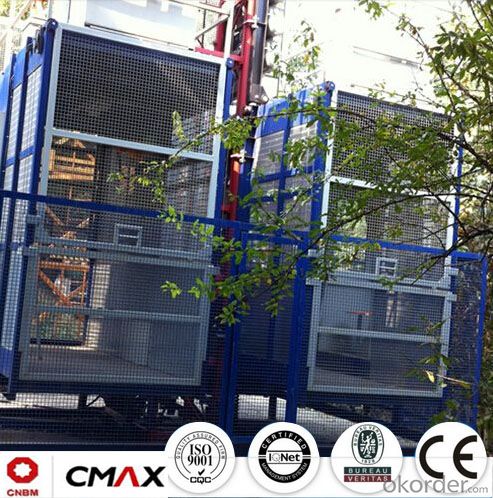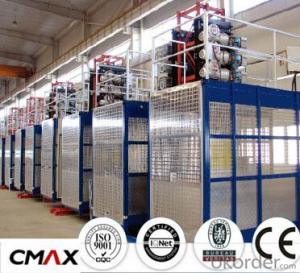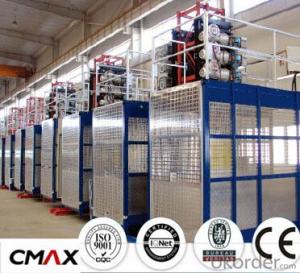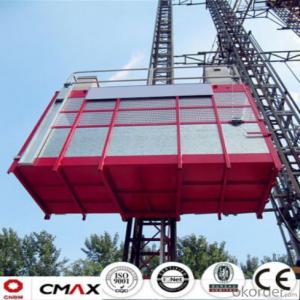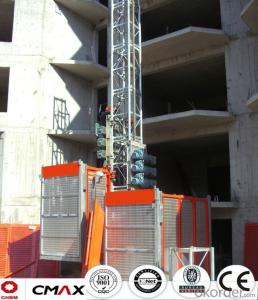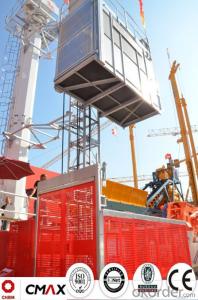Building Hoist Hot Galvanizing Mast Section with 3.2ton Capacity
- Loading Port:
- China main port
- Payment Terms:
- TT OR LC
- Min Order Qty:
- 1 unit
- Supply Capability:
- 10 unit/month
OKorder Service Pledge
OKorder Financial Service
You Might Also Like
Structure of Building Hoist Description
The hoist can be widely used in industrial and civilian construction, bridge, under well, big chimney as well as shipping industry to carry people and materials. As permanent or semi-permanent equipment, hoist can be used in different sites such as warehouse, high tower, etc.
With the advantages of reliable performance, safety, easy carrying, high adaptability, it can reduce operators’ work intensity.
With many advanced technology integrity, strict control on each making process, high ratio of price and quality, CMAX hoist has become a symbol of lifter with high quality and excellent after-sales service.
Packaging & Delivery of Building Hoist
Packaging: nude and wooded box Delivery: 25-30days
Mains Parts of Building Hoist
1.Metal structure including the mast, tie in and cabin ,could be spay-painted and hot galvanized. Mast section is produced with high quality Q345B seamless steel pipe.
2.Electric parts are all equipped with Schneider , Siemens and other top brands.
3.The electrical system can be adopted with the normal control method and VVVF+PLC control method. Inverter we adopted is from Schneider. Yaskawa and other world famous brand.
4.Cabin exit door adopts ramping type. The ramping door likes a bridge between the building hoist and construction building.
5.The cabin floor is produced from 3MM thickness steel riffled board(Hot dip galvanized), and 15MM thickness wooden board which can reduce the vibration and deformation a lot.
6.Driving unit is adopted the products from ZHANGJIANG and other reputed maker, or from SEW, NORD.
Building Hoist Images



Building Hoist Specification

FAQ of Building Hosit
Q: What is the building hoist main purpose?
A: Building hoist equipped with double or single cabin to transport the materials and labors up and down. It's the ideal construction equipment for vertical transportation in the field of construction.
Q: What is the main structure of building hoist?
A: The P/M construction hoist mainly contains metal structure, driving system, electrical control system, cable guide & protection system, electrical top crane and safety device.
Q: What is the meaning of the building hoist’s code?
A: Take SC200/200 for example: “SC” stands for rack and pinion hoist, “200/200” stands for double cage and capacity is 2 tons per cage. “SC200” stands for single cage and capacity is 2 tons.
- Q: This question asks for a list of various types of lifting equipment commonly used in the construction industry.
- <p>In construction, various types of lifting equipment are utilized to move heavy materials and structures. These include cranes such as tower cranes, mobile cranes, and crawler cranes, which are versatile and can lift heavy loads to significant heights. Forklifts are used for lifting and moving materials over short distances. Telescopic handlers, also known as cherry pickers, provide both lifting and access capabilities. Hoists are used for lifting smaller loads and are often found in workshops or on construction sites. Derricks are fixed structures used for lifting heavy loads in a specific area. Lifting slings and shackles are used in conjunction with cranes and hoists to secure loads. Finally, aerial work platforms, like scissor lifts and boom lifts, provide elevated access for workers and materials. Each type of lifting equipment serves a specific purpose and is chosen based on the nature of the construction project and the weight and size of the loads to be moved.</p>
- Q: This question asks for measures to protect lifting equipment from damage during its operation.
- <p>To prevent damage to lifting equipment during operation, ensure regular maintenance and inspection are conducted to check for wear and tear. Adhere to the equipment's load limits and never exceed them. Use appropriate lifting techniques and ensure the load is balanced. Keep the equipment clean and free from debris. Train operators thoroughly on safe operating procedures. Avoid sudden starts or stops, and ensure all safety features and guards are in place and functioning correctly. Regularly check cables, hooks, and other critical components for any signs of damage. Always follow the manufacturer's guidelines and industry safety standards.</p>
- Q: What is the main function of the construction elevator safety guard
- Falling to a certain speed will automatically card death
- Q: This question asks whether a hydraulic building hoist can be used in both indoor and outdoor environments and seeks reasons for its versatility.
- <p>A hydraulic building hoist can be used both indoors and outdoors. These hoists are designed to be versatile and durable, capable of withstanding various weather conditions when used outdoors. They are also compact and can be easily maneuvered in indoor spaces. The primary reason for their versatility is the robust construction and the ability to handle different loads with precision. Additionally, hydraulic systems are less affected by electrical interference, making them suitable for environments with fluctuating power supplies. However, it's important to ensure that the hoist is properly maintained and protected from extreme weather conditions to prolong its lifespan and ensure safety.</p>
- Q: Is it possible to utilize a building hoist for construction purposes?
- <p>Yes, a building hoist is specifically designed for use in construction work. It is a type of lifting equipment used to transport materials and personnel vertically within a building under construction. Building hoists are essential for efficient material handling, reducing manual labor, and ensuring the safety of workers by providing a stable and controlled method of vertical transportation. They are commonly used in high-rise construction projects and are an integral part of the construction process.</p>
- Q: Explain how a lifting platform, specifically a building hoist, operates.
- <p>A building hoist, also known as a construction hoist, is a temporary lifting platform used in construction to lift materials and personnel vertically within a building under construction. It operates by using a motor-driven pulley system that runs on guide rails or tracks. The hoist is attached to the building structure and as the building grows, the hoist is extended upwards. The platform is loaded with materials or workers, and the operator controls the ascent or descent through an electrical switch or remote control. Safety features include limit switches to prevent over-travel, safety catches to stop the platform in case of a cable failure, and interlocks to ensure the platform cannot be operated when the doors are open.</p>
- Q: What is the safety device for construction elevator?
- Fence threshold position, threshold position, both inside and outside ladder ladder cage cage up and down limit, limit switch, for safety device, weight limiter and ladder to the top of cage outside the door stop, on the abrupt stop switch. The highest point is a toothless standard day. There are elevators and ultra high sensing switches.
- Q: This question asks for a comparison of the benefits and drawbacks of employing lifting equipment in the construction industry.
- <p>Advantages of using lifting equipment in construction include increased efficiency, reduced manual labor, and the ability to handle heavy loads safely. It can also improve safety by reducing the risk of injury from lifting heavy objects manually. Additionally, it allows for faster construction times and can access hard-to-reach areas. Disadvantages include high initial costs for purchasing or renting the equipment, potential for mechanical failure, and the need for skilled operators. There is also a risk of accidents if the equipment is not used properly, and it may require more maintenance and training for staff.</p>
- Q: Is it possible to use a building hoist to lift multiple objects simultaneously?
- <p>Yes, it is possible to use a building hoist to lift multiple objects at once, provided the total weight of the objects does not exceed the hoist's load capacity. It's important to ensure that the objects are securely fastened to prevent any from falling. Additionally, safety protocols should be followed to avoid overloading the hoist, which can lead to mechanical failure or accidents. Always consult the hoist's specifications and safety guidelines before lifting multiple objects.</p>
- Q: What is the meaning of double straps in the construction elevator?
- Used for heavy to offset the hoisting cage weight so as to realize energy-saving province electric hoist, by making use of the fixed pulley for heavy gravity into upward traction hanging basket of traction, so as to reduce the drive motor load, achieve energy saving.
Send your message to us
Building Hoist Hot Galvanizing Mast Section with 3.2ton Capacity
- Loading Port:
- China main port
- Payment Terms:
- TT OR LC
- Min Order Qty:
- 1 unit
- Supply Capability:
- 10 unit/month
OKorder Service Pledge
OKorder Financial Service
Similar products
Hot products
Hot Searches
Related keywords
